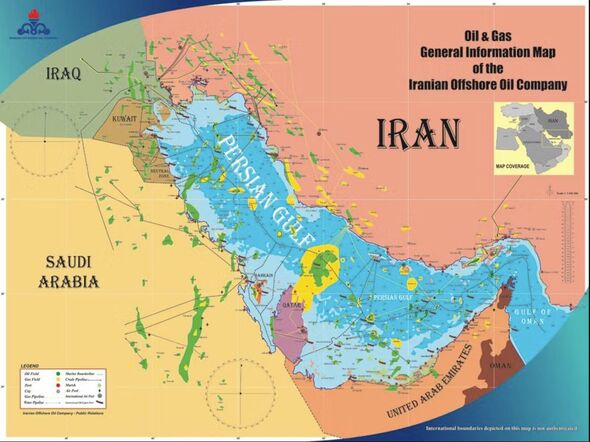Map shows Iran's oil fields it shares with US allies after price plummet
Nearly the entire southern border of Iran is populated by oil and gas fields, many of which are jointly operated with allies of the United States

Oil prices fell sharply on Monday after Iran's retaliatory strike on a United States airbase in Qatar left no casualties, leading some investors to believe that a de-escalation in the conflict was imminent.
The price dip followed a significant spike in exports out of Iran after Israel began its nearly two-week attack, which saw Iran exporting at an increase of 44% compared to its year-to-date average.
Attacks between the U.S. and Iran this week raised the stakes of Iran's oil production and exports, as its most substantial joint oil fields are shared with strategic partners of America.
- B-2 bomber pilots had toilet, microwave and snack cooler on their 37-hour Fordow strike
- US government issues serious travel warnings for four popular vacation destinations
Neighboring countries Saudi Arabia, Qatar and Iraq have enabled Iran to greatly increase its oil and gas production with the help of Western companies.
Despite a post on social media by Donald Trump on Monday that announced a ceasefire between the U.S., Israel, and Iran, how obediently the three countries will respond to calls for a peaceful de-escalation is yet to be seen. Meanwhile, all across Iran, oil and gas fields continue to be operated at an increasingly ambitious pace jointly by Iran and U.S. allies.

The 28 joint fields, which occupy nearly the entire northern coast of the Persian Gulf, represent 30% of Iran's gas reserves and 20% of its extractable oil, according to Iran International. Though it holds the world's second-largest gas reserves and fourth-largest oil reserves, Iran has consistently fallen behind in its production compared to its neighboring countries.
The largest oil fields in Iran are operated alongside Iraq, which currently allows the U.S. to use its military bases in exchange for hundreds of millions of dollars in military training and aid, among other partnerships. Iraq extracts four times more oil than Iran from these fields, and has signed contracts with companies from China, Russia and the West to boost its efforts.
Iran's largest gas fields are shared jointly with Qatar, another ally of the U.S. Qatar began extracting gas a decade before Iran at the South Pars (North Dome) field, and has produced double the gas.
Saudi Arabia, whose formal relations with the U.S. were formalized in 1951, also shares oil and gas fields with Iran. At the Forouzan field, Saudi Arabia produces about 14 times the amount of oil than Iran.

Declining foreign investment and a weak private sector have caused Iran's Ministry of Oil to rely on only a 14.5% share of oil revenues for investments. Annual investments in the country's oil and gas projects have dropped from around $18 billion in the 1990s to just $3 billion since 2017. Sanctions from the U.S. and other countries are also partly to blame for the reduction in Iran's oil export revenues, Iran International reports.
This week, as the conflict between Iran and Israel grew more destructive, experts say Iran seized the moment to rapidly increase its exports.
“It seems very clear what they’re doing,” Samir Madani, co-founder of oil trade monitoring firm TankerTrackers.com, told Bloomberg. “They’re trying to get out as many barrels they can but with safety as their number one priority.”
The result is a tangle of political and financial alliances continuing to scale up oil production and export efforts while, simultaneously, the U.S. and Iran launch tactical attacks against one another's military facilities.
